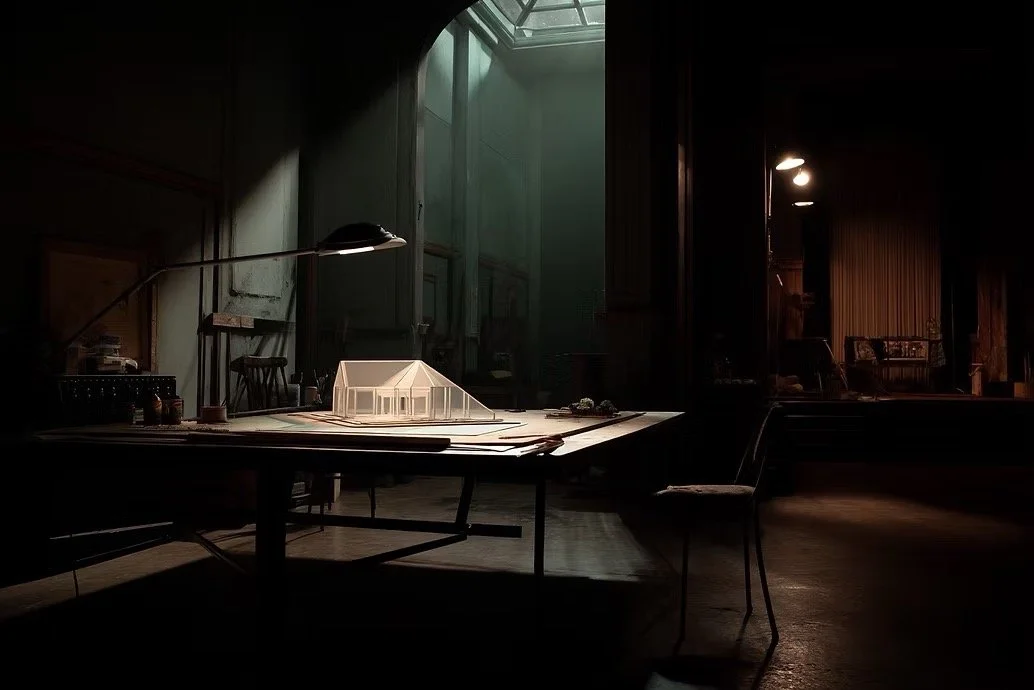Scenic Insights
A designer’s perspective on process, philosophy, and the tools that bring ideas to life.
Becoming a Scenic Designer: When the Work Starts to Feel Like Yours
Starting out as a scenic designer can feel overwhelming—every detail revised, every choice questioned. But with time, revisions shrink, and the work begins to feel like your own. The quiet moment comes when the notes are small, and you finally recognize: this is your voice.
Framing the Martyr: Scenic Design as Memory Work in Romero
From the beginning, it was clear the scenic language needed to support a nonlinear dramaturgy. The play leaps between beach and cathedral, war zone and heaven. Characters slip between time and identity. Puppetry, projections, and movement required the space to transform without literalism.
The Lights Were Already On: Maude Adams’ Legacy at Stephens College
There's a portrait that watches over the Macklanburg Playhouse. If you've ever performed there, you've seen it—Maude Adams, eyes just over your shoulder as you step into the light. The original Peter Pan. A Broadway icon. But more than that: a pioneer in theatrical lighting and the former head of the drama department at Stephens College.
Understanding Computer Hardware: Why Scenic Designers (and All Theatre Designers) Need to Care
Theatre designers depend on computers as much as pencils and sketchbooks—but when hardware lags behind software, creativity suffers. From scenic rendering to lighting visualization, understanding CPUs, GPUs, and memory isn’t just technical trivia—it’s essential knowledge that protects your workflow, your time, and ultimately, your artistry.




